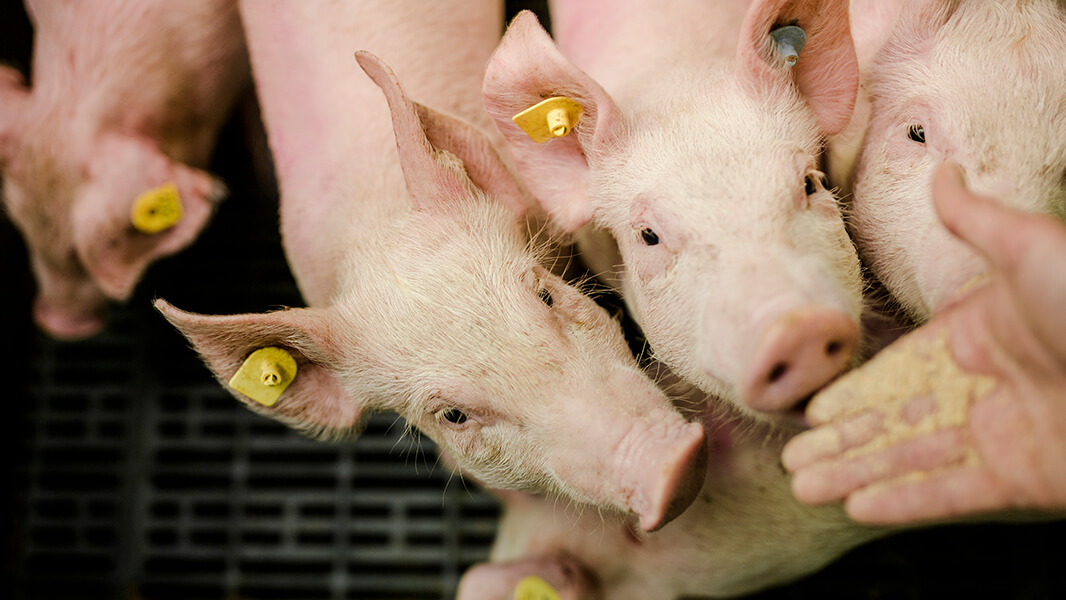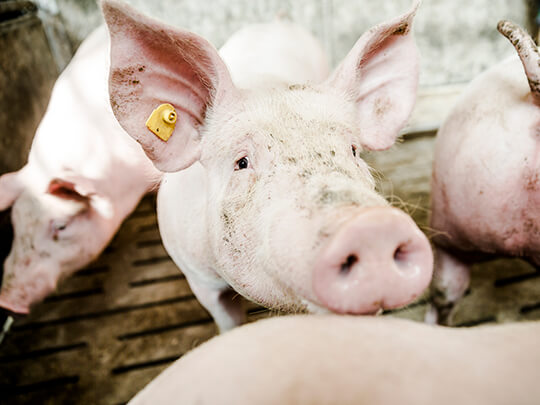
Growth performance maintenance
Pig producers on fattening farms face specific challenges like rising costs and falling prices making optimal growth performance in growing and finishing pigs more important than ever.
For a profitable swine business, one of the decisive factors is feed efficiency. On top of this, there has been a notable increase in awareness and attention from consumers and governmental bodies regarding environmentally sustainable pig production. This can put more pressure on a farm’s pig management strategy including the feeding strategy. A successful and profitable feeding strategy means obtaining highest growth rates and daily gain while keeping overall feed costs as low as possible and reducing environmental load.

The decisive factor: optimize cost per kg of gain
For a profitable swine production system, the decisive factor is the cost per kg of meat produced - the feed efficiency. During the grower-finisher stage, feed efficiency means obtaining highest growth rates and daily gain while keeping feed costs as low as possible.
A prerequisite for a high growth rate and thus cost savings, is a normal health status of the animal and a good digestibility and absorption of dietary nutrients. Due to an enhanced utilization and retention of dietary energy and protein the growth performance in grower-finishers is increased. This can save feed costs, shorten the finishing period and improve feed conversion ratio.
We have developed the phytogenic range Aromex™, a unique selection of ingredients like spicy substances, essential oils, and saponins perfectly adapted to the requirements of growers and finishers. The aromatic formulation of phytogenics enhances feed intake and therefore supports growth performance.
Interested in other Challenges & Solutions?
Some products are only approved for use in certain geographies, end uses, and/or at certain usage levels. It is the customer's responsibility to determine, for a particular geography, that (i) the product, its use and usage levels; (ii) the customer's product and its use; and (iii) any claims made about the customer's product, all comply with applicable laws and regulations. *Any references to “natural/naturally” are as defined by www.aafco.org. Any references to “feed additive(s)” are as per the laws and regulations in the United States. For product registration information, please refer to the product data sheets.
Get in contact

Megan Koppen
RTM Poultry, Sales Group North America
Phone:
+1 (630) 731-0250
e-mail:
Megan_Koppen@cargill.com